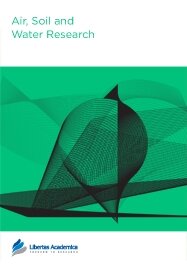

Publication Date: 15 Apr 2009
Type: Original Research
Journal: Air, Soil and Water Research
Citation: Air, Soil and Water Research 2009:2 15-29

Ingegerd Rosborg1, Lars Gerhardsson2 and Bengt Nihlgård3
1Institute of Chemical Engineering, Lund University, SE-221 00 Lund, Sweden. 2Department of Occupational and Environmental Medicine, Sahlgrenska Academy University Hospital, SE-425 30 Göteborg, Sweden. 3Department of Plant Ecology and Systematics, Lund University, SE-223 62 Lund, Sweden.
Abstract
A study in 1997, on mineral levels in acidic compared to alkaline well waters, and in women’s hair, revealed higher concentrations of a number of mineral elements like Ca, Mo and Se in alkaline waters and hair. Thus, median Ca levels were six times higher in well water and five times higher in hair from the alkaline area compared to the acidic area. This finding raised the probability of similar differences in vegetables from these areas. Thus, in the year 2006, 60 women who had participated in the study in 1997 were asked to cultivate parsley, lettuce, carrot and chive. During the spring of 2006, the women from the water and hair study of 1997, 30 of them from the acidic area and 30 women from the alkaline district cultivated vegetables: carrot (Daucus carota L), parsley (Petroselinum crispum), chive (Allium schoenoprasum) and lettuce (Eruca sativa). The vegetables were harvested, and rinsed in tap water from the kitchens of the participating women in August. The concentrations of about 35 elements and ions were determined by ICP OES and ICP-MS predominantly. In addition, soil samples from the different cultivators were also analyzed for a number of elements. Lettuce and parsley showed the highest concentrations of mineral elements per gram dry weight. Only Mo concentrations were significantly higher in all the different vegetables from the alkaline district compared to vegetables from the acidic areas. On the other hand, the concentrations of Ba, Br, Mn, Rb and Zn were higher in all the different vegetables from the acidic area. In the soil, only pH and exchangeable Ca from the alkaline area were higher than from the acidic area, while exchangeable Fe, Mn and Na concentrations were higher in soils from the acidic area. Soil elements like Al, Fe, Li, Ni, Pb, Si, Ti, V, Zn and Zr were found in higher concentrations in lettuce and parsley, which were attributed to soil particles being splashed on the plants by the rain and absorbed by the leaves. Strong correlations appeared between Ca and Sr in all the vegetables, except for carrot. No strong correlations were found between soil elements and vegetable elements, except for soil Mn and carrot/lettuce Mn. The differences in mineral levels in both, vegetables and soils were however small, compared to differences in well waters and hair. It was also suggested that the garden soils on limestone bedrock had been drained of minerals and thereby, the soil had an acidic pH. The contribution of mineral elements to daily intake in humans was considered minor from the analysed vegetables, except for some samples of lettuce that should give significant contributions of Ca, Zn, Mn and Mo. The main conclusion is that, differences in water and hair mineral levels between the two areas in the earlier study (1997) were not mirrored in vegetables cultivated in 2006. Principally, this suggests that, for humans the mineral intake of some elements from water may be more important than from vegetables.
PDF (334.42 KB PDF FORMAT)
RIS citation (ENDNOTE, REFERENCE MANAGER, PROCITE, REFWORKS)
BibTex citation (BIBDESK, LATEX)


As an open access journal with an international audience, Air, Soil and Water Research has a tremendous worldwide impact. Peer reviewing process is essential to maintain the high standard of quality of published papers, and I have thoroughly enjoyed my participation as a reviewer for Air, Soil and Water Research. The online review system is very easy and simply to use. I am looking forward to peer reviewing additional articles in the future. ...

All authors are surveyed after their articles are published. Authors are asked to rate their experience in a variety of areas, and their responses help us to monitor our performance. Presented here are their responses in some key areas. No 'poor' or 'very poor' responses were received; these are represented in the 'other' category.See Our Results
Copyright © 2013 Libertas Academica Ltd (except open access articles and accompanying metadata and supplementary files.)
Facebook Google+ Twitter
Pinterest Tumblr YouTube